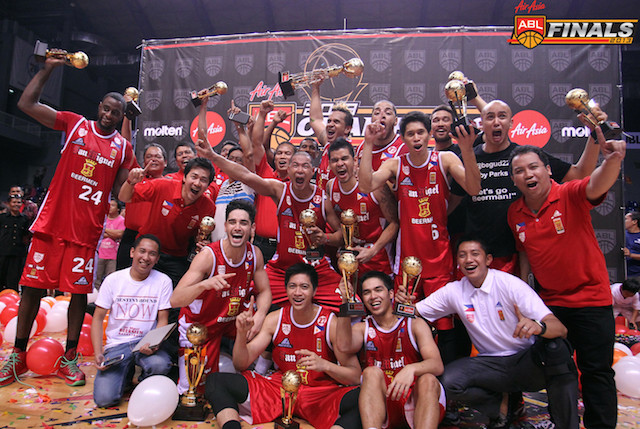ABL making an impact in regional basketball scene

The San Miguel Beer franchise won a championship during its stint in the Asean Basketball League (ABL) before bringing back its name in the PBA. INQUIRER FILE PHOTO
KUALA LUMPUR — Running a regional basketball league with teams scattered around Southeast Asia is not without its struggles.
But now on its sixth season, the Asean Basketball League is fueled with the vision to grow into a premier league not only in the Southeast but in the entire Asian region.
“The people who drive the ABL year in and year out are passionate people, passionate about the vision that in the couple of years the ABL will be bigger than what they envisioned it to be,” said Jericho Ilagan, the newly named Chief Operating Officer of the ABL who hails from the Philippines.
From intermittent scheduling, difference in quality of competition, to sustaining interest in countries whose primary sport is not basketball, the ABL has been able to embrace the diversity.
Filipinos impact
Last season, the ABL took a huge hit when for the first time since its inauguration in 2009 the two Philippine-based teams withdrew from tournament that left the league without its biggest market.
“Because of the fact that your best competition is not there, the top tier is not present, then you play against the second tier so the level of competition is not that high,” admitted Ilagan, who served as a Technical Director for the ABL in the recent years.
The ABL, though, was bolstered by the presence of Filipino players who suited up for other countries as ASEAN imports and, more often than not, are the cornerstones of of their respective teams.
“You support Filipinos who play for other countries. They are also OFWs who are excelling in their own teams,” he said.
Former PBA stalwarts like Froilan Baguion and Leo Avenido are some players who have developed a following in other countries because of their successful stints in the ABL.
PBA first round picks Moala Tautuaa, Stanley Pringle and Chris Banchero, meanwhile, made a name for themselves in the first-ever ASEAN regional league first before plunging into the pros.
Closing the gap
Because of the competition brought about by a basketball-crazy nation like the Philippines, the ABL believes that it has contributed to closing the gap of the level of competition between countries.
“The biggest triumph for me is that before, PH is always the champion in the region. But during the SEABA and the SEA Games, it seemed like we would be defeated by other teams like Singapore, Thailand. If you close the parity gap, that’s a win for the ABL,” Ilagan said.
During the Southeast Asian Games in Singapore last June, the Gilas cadets, heavy favorites to rule men’s basketball, had to grind their way to win the gold after getting a scare from the Thais, whose core was composed of ABL players.
“The development can be attributed in the ABL. Their players are training year round. In 4-5 years Singapore turned from zero to consistent podium finishes. Thailand now always sends its best team and Indonesia doesn’t like losing big anymore.”
Expansion
The fact remains that sustaining the interest in these football nations is a struggle.
“The biggest struggle is that besides the Philippines, it’s not the primary sport. With that said, it’s hard to ensure that you have funding every year,” said Ilagan. “Basketball takes a back seat unlike in the Philippines.”
But in the past seasons, the reception has been generally warm for ABL games with long lines, sold out tickets and packed gyms every game, especially when the Philippine team is visiting.
The ABL, which usually runs up to six months per season, also has to sort out the kinks when it comes to scheduling and holidays, cost of living in different cities and salary differences.
After the fifth season won by the Hi-Tech Bangkok in 2014, ABL’s opening was moved from July to October due to scheduling conflicts amid the SEA Games and the SEABA tournaments.
“You have to work around the schedules of each country’s different local leagues, and holidays like Christmas, Chinese New Year, Ramadan,” Ilagan said.
But Ilagan said that the league is accepting the diversity of the multi-nation league, saying that it builds precious relationships between different nationalities, contributing to the beauty of the sport.
“Sometimes Filipino players have best friends from other countries,” he said.
Next for the ABL, which launches its new season on Tuesday to be attended by ABL and Air Asia executives at the Berjaya Hotel here, is to bring in more participating teams and possibly add one or two teams outside the Southeast Asian region.
“Our goal is to expand the game. We’ll look at other ways to innovate. Our goal is to expand outside of SEA region, you have to grow outside your comfort zone,” Ilagan said.